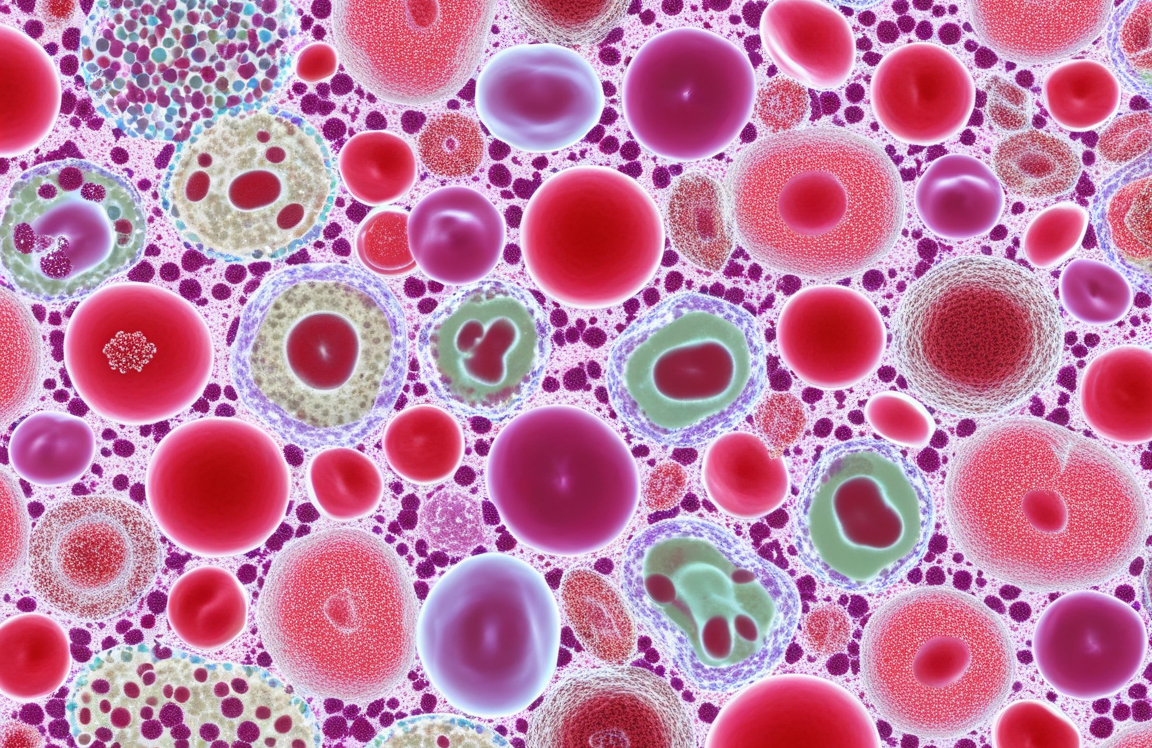
Simulating Systemic Leukemia: Applications of C1498 Cells in In Vivo Model Establishment and Dynamic Tracking
Introduction
Leukemia is a malignancy of the hematopoietic system, characterized by the abnormal proliferation of cancer cells in the bone marrow and their widespread dissemination into the peripheral blood and various organs. This systemic nature poses a significant challenge for preclinical research, as traditional subcutaneous solid tumor models fail to recapitulate its systemic pathology. Therefore, the development of in vivo animal models that faithfully reproduce the systemic infiltration of leukemia is crucial. The murine myeloid leukemia cell line C1498 has become a classic and indispensable tool in this field, owing to its ability to reliably induce systemic disease in immunocompetent syngeneic mice.
Establish a robust, systemic leukemia model with C1498 cells. It's the classic choice for your in vivo efficacy studies. Learn more>>
Establishing a Systemic Leukemia Model
The core advantage of using C1498 cells to create an in vivo model lies in its ability to simulate key pathophysiological processes of human Acute Myeloid Leukemia (AML).
l Model Establishment Method: The standard protocol involves the intravenous injection of a defined number of C1498 cells (typically 0.5 to 2 million) into the tail vein of C57BL/6 mice. As the C1498 cell line originated from a C57BL/6 mouse, this syngeneic transplantation does not elicit an immune rejection response. This ensures that the disease develops within the context of a fully intact immune system, a feature that is particularly critical for immunotherapy research.
l Recapitulation of Pathological Features: Following injection, C1498 cells rapidly disseminate throughout the body via the circulatory system. Within weeks, the mice develop typical leukemic symptoms, including:
1. Widespread Organ Infiltration: Leukemic cells extensively infiltrate the bone marrow, spleen, and liver, causing organ dysfunction and significant enlargement, a condition known as hepatosplenomegaly, which is a key clinical sign of AML.
2. Elevated Peripheral White Blood Cell Count: As the disease progresses, a large number of leukemic cells can be detected in the peripheral blood.
3. Systemic Symptoms: The mice gradually exhibit signs of cachexia, such as weight loss, ruffled fur, and reduced activity.
l Disease Assessment Metrics: Researchers use several metrics to evaluate disease severity and the efficacy of therapeutic interventions. The primary endpoint is survival analysis (Kaplan-Meier curves). At the experimental endpoint, mice are typically euthanized, and their spleen and liver weights are measured and compared across groups. Additionally, flow cytometry is used to analyze the percentage of leukemic cells in the bone marrow, spleen, and peripheral blood.
Combining with In Vivo Bioluminescence Imaging (BLI) Technology
While traditional assessment methods are reliable, they are typically terminal and cannot provide dynamic information on disease progression within a single animal. To overcome this limitation, genetically engineered versions of C1498 cells have been developed.
l The C1498-Luc Cell Line: This is a tool cell line created by stably integrating the gene encoding firefly luciferase into the genome of C1498 cells, usually via a lentiviral vector. These cells retain all the properties of the parental C1498 line but also constitutively express active luciferase.
l Non-invasive Dynamic Monitoring: The principle of this technology is that when the substrate D-luciferin is injected intraperitoneally into a mouse bearing C1498-Luc cells, the intracellular luciferase catalyzes a reaction that produces light. This bioluminescent signal can be captured by a highly sensitive imaging system (e.g., an IVIS). The advantages of this approach are revolutionary:
1. Non-invasiveness and Longitudinal Studies: Researchers can image the same cohort of animals repeatedly throughout the entire experiment (e.g., weekly) without the need for sacrifice. This provides a complete dynamic curve of disease progression for each individual, significantly reducing data variability caused by inter-animal differences and lowering the number of animals required.
2. Precise Quantification: The intensity of the light signal (measured as photon flux) is directly proportional to the number of viable leukemic cells. Therefore, by analyzing the total photon flux from the entire animal, one can accurately and objectively quantify the total tumor burden.
3. Visualizing Distribution: The resulting images provide a clear spatial map of leukemic cell distribution in the body. For instance, one can visualize signal accumulation in the spine (bone marrow) and abdominal area (liver and spleen), offering visual evidence of how a drug affects cancer cell homing and infiltration.
Upgrade your research with C1498-Luc cells. Visualize tumor burden and therapeutic response in real-time within living animals. Order Now>>
Conclusion
The C1498 cell line provides a classic and robust in vivo platform for studying systemic leukemia. The advent of its luciferase-expressing variant, C1498-Luc, in combination with bioluminescence imaging, has elevated leukemia research from static, endpoint analyses to dynamic, real-time, and quantitative monitoring. This powerful combined model not only faithfully simulates the clinical course of the disease but also enables the precise evaluation of the in vivo efficacy of novel therapeutics, especially immunotherapies, thereby greatly accelerating the preclinical development of new anti-leukemia drugs.
References
[1] Dunbar, C. E., & Bodine, D. M. (1990). A murine model of Graft-versus-Host Disease: cellular analysis of marrow, spleen, and thymus. Blood, 76(8), 1665–1674.
[2] Mali, R. S., Bhole, D., & Staser, K., et al. (2012). A novel, conditionally active BRAFV600E in a syngeneic model of hairy cell leukemia. Blood, 120(13), 2640–2644.
[3] Rashidian, M., Kasso, T., & Vlieg, R. C., et al. (2017). Targeting self-antigen-presenting B cells with T-cell-dependent bispecific antibodies in murine models of autoimmunity. Proceedings of the National Academy of Sciences, 114(25), E4968–E4977.
[4] Askmyr, M., Ågerstam, H., & Hansen, N., et al. (2011). Selective killing of candidate AML stem cells by a C-type lectin-like molecule 1-targeting antibody. Blood, 117(20), 5526–5535.

